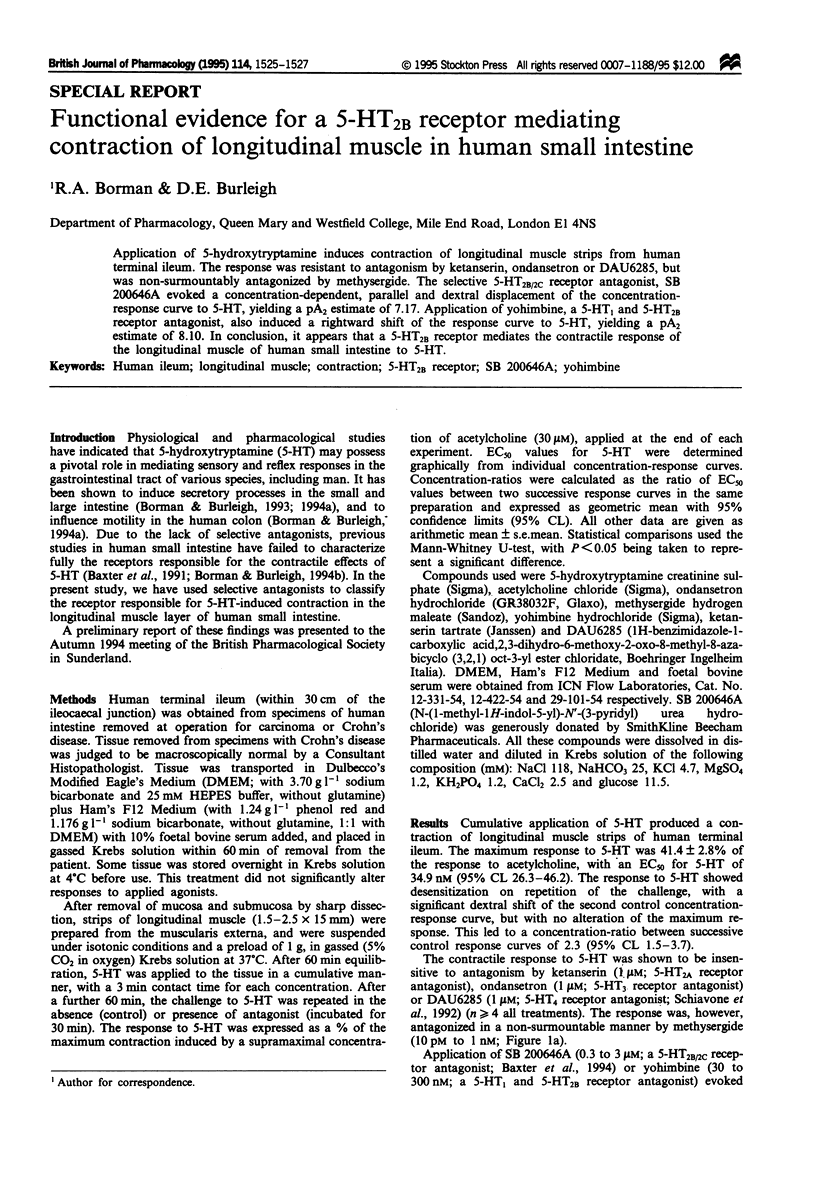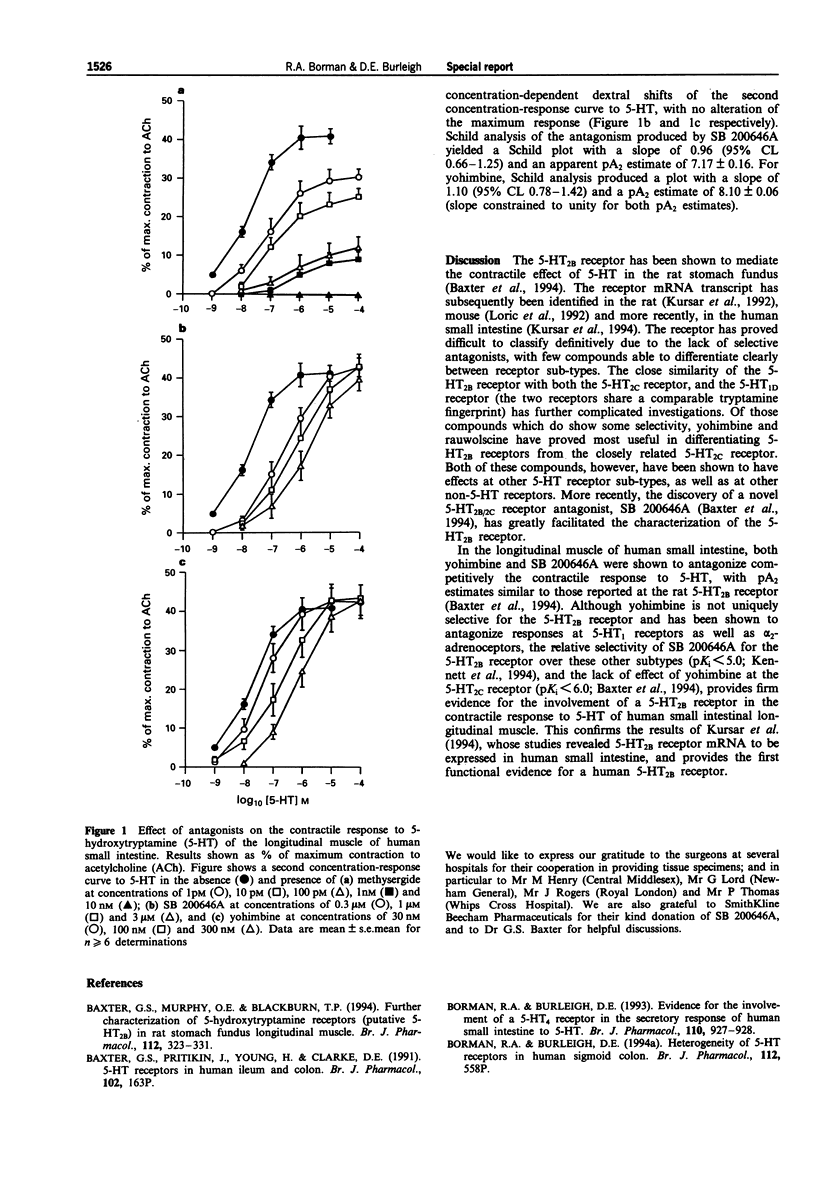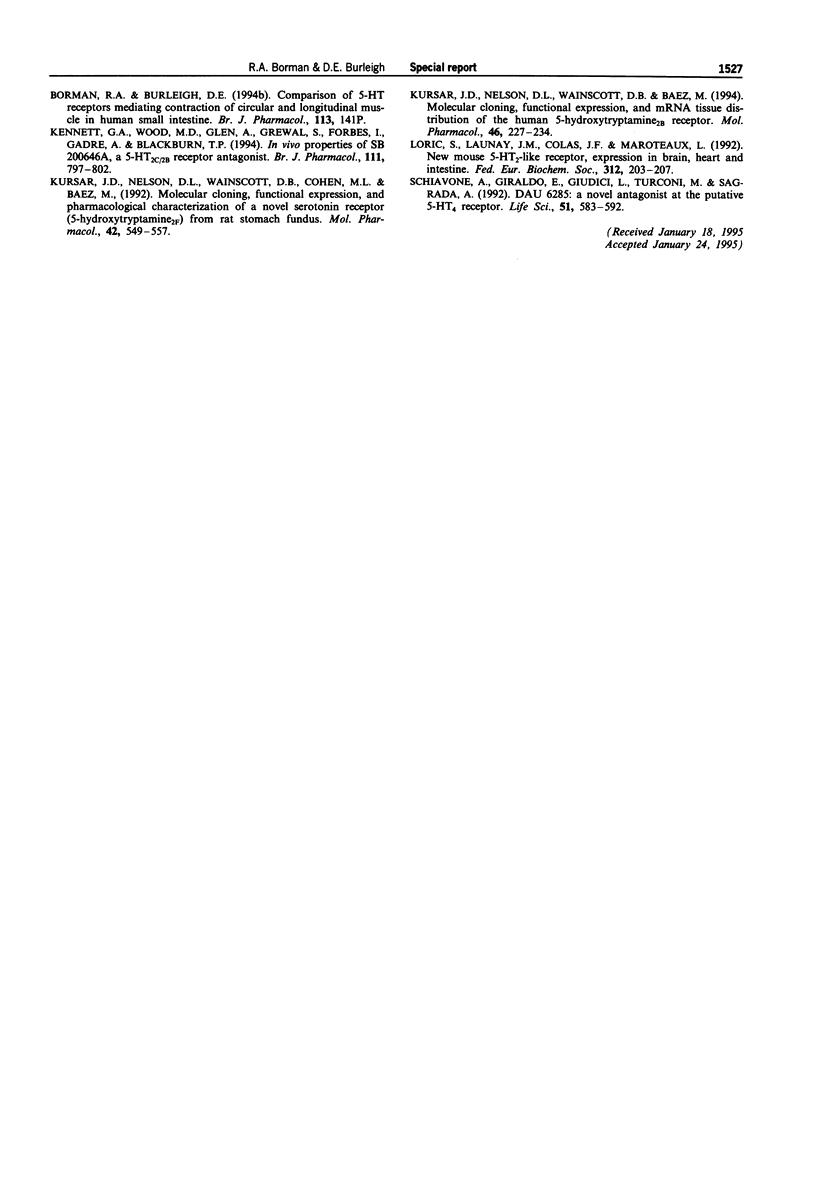Abstract
Application of 5-hydroxytryptamine induces contraction of longitudinal muscle strips from human terminal ileum. The response was resistant to antagonism by ketanserin, ondansetron or DAU6285, but was non-surmountably antagonized by methysergide. The selective 5-HT2B/2C receptor antagonist, SB 200646A evoked a concentration-dependent, parallel and dextral displacement of the concentration-response curve to 5-HT, yielding a pA2 estimate of 7.17. Application of yohimbine, a 5-HT1 and 5-HT2B receptor antagonist, also induced a rightward shift of the response curve to 5-HT, yielding a pA2 estimate of 8.10. In conclusion, it appears that a 5-HT2B receptor mediates the contractile response of the longitudinal muscle of human small intestine to 5-HT.
Full text
PDF


Selected References
These references are in PubMed. This may not be the complete list of references from this article.
- Baxter G. S., Murphy O. E., Blackburn T. P. Further characterization of 5-hydroxytryptamine receptors (putative 5-HT2B) in rat stomach fundus longitudinal muscle. Br J Pharmacol. 1994 May;112(1):323–331. doi: 10.1111/j.1476-5381.1994.tb13072.x. [DOI] [PMC free article] [PubMed] [Google Scholar]
- Borman R. A., Burleigh D. E. Evidence for the involvement of a 5-HT4 receptor in the secretory response of human small intestine to 5-HT. Br J Pharmacol. 1993 Nov;110(3):927–928. doi: 10.1111/j.1476-5381.1993.tb13901.x. [DOI] [PMC free article] [PubMed] [Google Scholar]
- Kennett G. A., Wood M. D., Glen A., Grewal S., Forbes I., Gadre A., Blackburn T. P. In vivo properties of SB 200646A, a 5-HT2C/2B receptor antagonist. Br J Pharmacol. 1994 Mar;111(3):797–802. doi: 10.1111/j.1476-5381.1994.tb14808.x. [DOI] [PMC free article] [PubMed] [Google Scholar]
- Kursar J. D., Nelson D. L., Wainscott D. B., Baez M. Molecular cloning, functional expression, and mRNA tissue distribution of the human 5-hydroxytryptamine2B receptor. Mol Pharmacol. 1994 Aug;46(2):227–234. [PubMed] [Google Scholar]
- Kursar J. D., Nelson D. L., Wainscott D. B., Cohen M. L., Baez M. Molecular cloning, functional expression, and pharmacological characterization of a novel serotonin receptor (5-hydroxytryptamine2F) from rat stomach fundus. Mol Pharmacol. 1992 Oct;42(4):549–557. [PubMed] [Google Scholar]
- Loric S., Launay J. M., Colas J. F., Maroteaux L. New mouse 5-HT2-like receptor. Expression in brain, heart and intestine. FEBS Lett. 1992 Nov 9;312(2-3):203–207. doi: 10.1016/0014-5793(92)80936-b. [DOI] [PubMed] [Google Scholar]
- Schiavone A., Giraldo E., Giudici L., Turconi M., Sagrada A. DAU 6285: a novel antagonist at the putative 5-HT4 receptor. Life Sci. 1992;51(8):583–592. doi: 10.1016/0024-3205(92)90227-g. [DOI] [PubMed] [Google Scholar]


